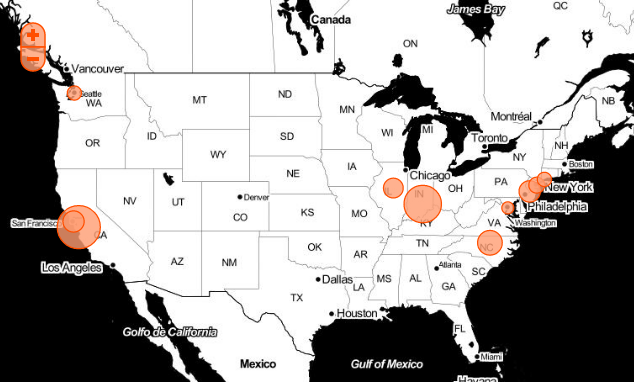The debate more than foreign skilled workers in the United States divides along painfully predictable fault lines. On one side, tech CEOs complain that the country’s flawed education system can’t create the talent they want to stay competitive. On the other side, labor and anti-immigration groups charge that companies just want to import more affordable labor from China and India at the expense of qualified U.S. workers.
In a new study, Brookings Institution researchers have drilled down into the numbers and found that the data doesn’t neatly support either side. Despite the interconnectedness of the international economy, the economics of bringing skilled foreign workers to the United States remains extremely much neighborhood.
Companies that want to bring in college-educated foreign workers must apply for what are identified as H-1B visas. The Brookings study appears to be one particular of the first that looks at H-1B applications at not just the national but the metro level.
“People just appear at a national snapshot and say we have a shortage or men and women are taking away jobs from Americans,” says study co-author Neil Ruiz. He says that from such a distance, the real picture gets distorted: “The data is displaying it’s not just a national debate. We want to recognize at a nearby level that this is exactly where economic activity happens. The skills have to occur at the nearby level.”
In one instance, the study describes the employment image in Columbus, Indiana, about 45 miles south of Indianapolis. Columbus ranks second only to Silicon Valley in intensity of demand for skilled foreign workers, measured by the quantity of H-1B requests per 1,000 jobs in the metro region. Columbus is home to Cummins Inc., a Fortune 500 diesel engine maker, which accounts for almost 90 percent of the region’s H-1B applications.
In Columbus, the overall unemployment rate stands at 6 percent, well below the national average. The unemployment rate for workers with bachelor’s degrees comes in even lower at three percent — a quantity that suggests diesel engineers with U.S. citizenship don’t have trouble locating perform in Columbus.
Meanwhile, the unemployment rate in Silicon Valley, a global hub of job creation, hovers at eight.4 percent, slightly larger than the overall U.S. rate. Employers in the region requested an average of practically 15,000 H-1B visas annually over the past two years, or much more than 17 for every thousand workers — by far the nation’s highest rate, according to Brookings.
Whether or not that signifies Silicon Valley businesses are hiring computer software engineers from overseas at the expense of their U.S. counterparts remains an open query, since the Brookings study only looked at worker demand and not provide. Leading-tier firms like Facebook and Google, which ranks 19th among U.S. employers requesting H-1Bs, scout furiously for so-known as 10x engineers, a category that probably excludes a lot of of the Valley’s unemployed coders. Even so, the city of San Jose’s economic development agency recently reported that some 1,800 unemployed engineers had registered with a city plan in search of work.
Either way, Brookings’ findings draw a map of U.S. innovation that extends well beyond the usual enclaves. Some high-demand H-1B cities shown on the map above seem like apparent magnets for talent, and others not so much. Ruiz believes the complexity of the situation on the ground reflects a single clear truth: If Congress really wants to aid the U.S. economic climate, it ought to set immigration policy based on data, not politics. The starting point, he says, is to set the cap on the number of H-1B visas each year by analyzing and meeting the demands of regional economies that depend on innovative businesses to stay vibrant.
“Washington is broken –– they always use ideology and get nowhere,” he says. “Facts at the local level can be employed to produce actual, informed policies removed from politics so we can in fact develop as a nation.”
Graphic: Marcus Wohlsen/Polymaps. Data: Brookings Institution/Bureau of Labor Statistics/American Community Survey 2010









